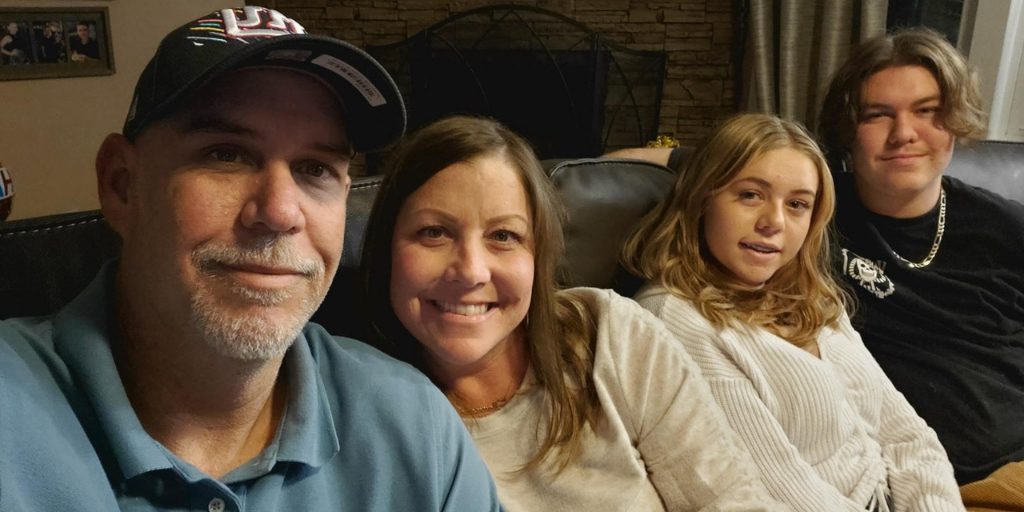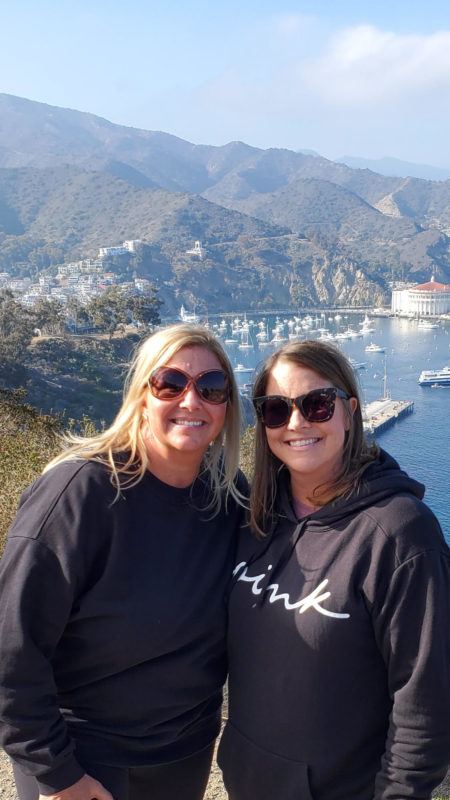Featured Survivor Story:
Shannon Eberly, Stage IV Melanoma Survivor- Sharing is Everything

By Mara Klecker
Shannon Eberly is fair-skinned and freckled, but she never had a mole on her skin that looked suspicious. That’s why her melanoma diagnosis in 2018 came as such a shock. Shannon had gone to the doctor after experiencing excruciating headaches that often lasted several days and were worse than migraines she’d had before. She pushed for more answers and finally underwent an MRI that revealed two lesions in her brain.
The next few days were a blur of more tests and scans that revealed more spots in her breast and lung. Doctors took a biopsy and told Shannon that she had Stage IV melanoma. They may never know where it originated – Shannon and her doctors have still never found an abnormal-looking mole on her skin.
Shannon also has a BRAF mutation, which can allow melanoma to grow more aggressively.
“My doctors were not very hopeful,” she said.
But Shannon thought of her two children, now 14 and 17 years old. She thought of their proms and high school graduations, of their weddings and the day when they would have their own children. She wanted to be there for all those milestones.
“I told myself I could crawl in a hole and be sad that I have this or I could fight and show my children that you don’t just give up when you have a battle,” Shannon said.
Shannon has continued that fight for four years, through two brain surgeries and multiple rounds of radiation and chemotherapy. After 18 months of chemo, she switched to immunotherapy, which she’s been undergoing for about two years. Staying on immunotherapy for so long has meant the side effects have grown worse, and Shannon often experiences intense body aches and fatigue. Her second brain surgery removed most of a tumor, but a small part of it was inoperable, so she still gets daily headaches. She’s also been on several rounds of steroids, which caused her body to retain water; her fingers swelled so much, she couldn’t wear her wedding ring.
“But I can deal with all of that because at least I’m still here,” Shannon said.
With the exception of time off after her brain surgeries and a couple of brief medical leaves, Shannon has continued to work as a children’s social worker in California. Her coworkers have rallied around to support her.
“I think it’s better to share things with people,” she said. “I have gotten so much from them in return.”
Shannon also told her children about her diagnosis right away. Her family went through a mourning process, she said, but it was crucial that they stayed honest with each other and sought outside resources to talk through their feelings. She found therapists for her children and, before her first brain surgery, wrote letters to both of them to open if she died.
“I was realizing all of the things I hadn’t taught them yet,” she said. Her goal then was to survive to see her son’s high school graduation, which is in a few months.

“It’s a miracle for me and one that seemed impossible four years ago,” she said. Now Shannon’s daughter is asking if her mom will be around to see her graduation too.
Shannon tells her: “Baby, I hope so. I want to see everything.”
Even as she thinks of those future moments with her children, Shannon said she works to stay present and she lives day to day. That’s been made easier because of the support from her family and friends and even prayers from many people she’s never met in person.
“The only thing I can control is my attitude in this,” she said.
In the months after her diagnosis, Shannon found melanoma support groups, but the ones she came across weren’t the right fit for her because they weren’t helping her stay positive.
“Then I came across AIM at Melanoma and I started reading the survivor stories,” she said. “I could read about people who knew what I was going through.” The AIM website was also where she found out about an upcoming melanoma walk in her area of California. It was coming up soon, but she quickly pulled together a team and made matching t-shirts. The day of the walk was a rainy one, but about 20 of her friends and family joined her.
This year, as Shannon was thinking about the upcoming Mary Nutter Collegiate Classic – the largest collegiate Division 1 softball tournament in the U.S. and a tournament that her sister is involved with – she thought back to that AIM walk and the melanoma education and awareness resources there for attendees.
So she reached out to AIM and asked if any of those items could be provided for the softball tournament, which will be held from February 24-27 in Cathedral City, California. AIM is sending signs, informational brochures, and sunscreen for the event, which hosts more than 40,000 people.
Shannon grew up playing softball and remembers the sunburns she’d get after hours out on the field. Both she and her sister also played collegiate softball.
“I really wanted to promote skin cancer awareness in our community, which spends so much time in the sun,” Shannon said. “If we could prevent even one person from getting melanoma, that would be amazing.”






